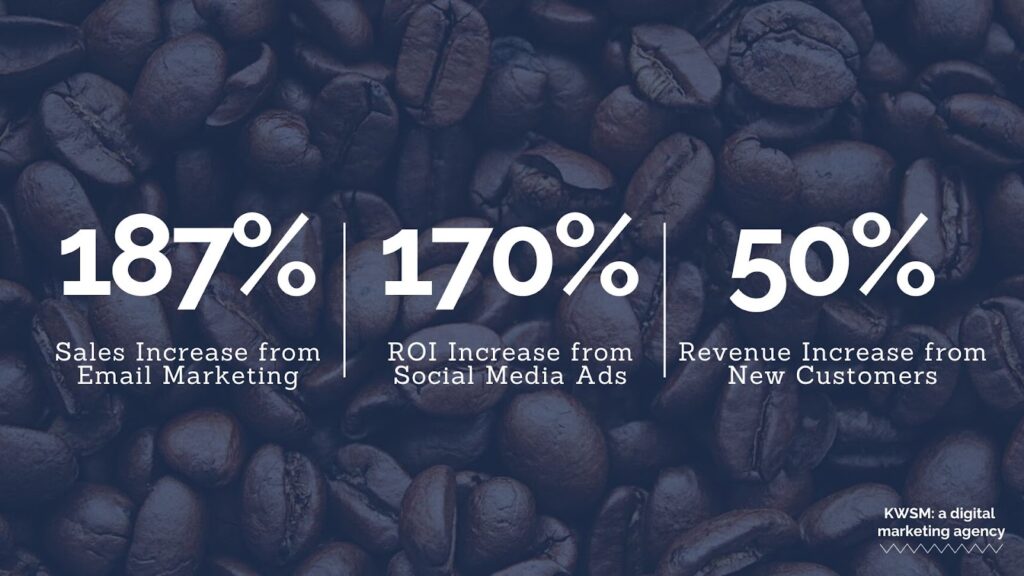What should a digital marketing strategy contain?

Many business owners and organizations who come to us for marketing assistance have already tried a variety of marketing tactics – but without a cohesive marketing plan in place, they haven’t gotten the results they were looking for. A digital marketing strategy is the missing link.
With nearly a decade in digital marketing as a Senior Digital Marketing Strategist and four years at KWSM, I have worked with some clients who didn’t have a strategy and clients who lived by their strategy. Overwhelmingly, the clients with the best results are those who had a plan and stuck to it.
KWSM has helped clients grow by creating hundreds of digital marketing strategies for businesses across all industries since. In this blog, I will discuss what elements should be included in your plan, including:
- Target Audiences
- Brand Messaging
- Marketing Goals
- User Experience
- Campaigns
- Timeline
Let’s start with defining a digital marketing strategy and why your business needs it.
What is a Digital Marketing Strategy?
A digital marketing strategy is a plan for how your business will reach your goals and the roadmap of how you get there. It contains a variety of marketing tactics and a detailed plan of how they will be used.
Your strategy is the most important part of your marketing. It serves as the main reference point for all of your campaigns, tactics, and overall plan for meeting your goals. A well-thought-out strategy defines all of your audiences, analyzes market conditions for your industry, establishes your voice and message, and lays out a concrete plan of action.
What Are the Benefits of a Digital Marketing Strategy?
Before we dive into what a digital marketing strategy should contain, let’s take a broad and honest look at marketing’s role for businesses.
First, according to Inc Magazine, 70% of all businesses fail within the first 10 years. Yes, some of these failures are caused by market forces and unpredictable current events. But many business owners close up shop because they don’t have a plan and their marketing performs poorly.
With this in mind, the importance of having a digital marketing strategy cannot be overstated.
Case Study: What Should a Digital Marketing Strategy Contain for eCommerce?
Our team worked with a San Diego coffee brand that wanted to increase its eCommerce presence with new and current customers.
After exploring their target audiences, analyzing their website and competitors, and developing their brand messaging, we created a robust digital marketing strategy that laid out how we would use email marketing and social media ads to reach their goals.
As a result of the campaigns developed in this strategy, this client achieved a 187% increase in sales from email marketing, a 170% increase in ROI from social media ads, and a 50% increase in online revenue from new customers.

“Our work for Ryan Bros clearly illustrates how effective a full-funnel strategy can be. Instead of having one opportunity to capture a customer, we take them each on their own unique journey, characterized by multiple touch points that come together to form an omnichannel marketing mix.”
Enes Ozenkin, Content Editor, KWSM
Now that we’ve established what a successful outcome can look like, let’s dive into the questions that your digital marketing strategy should answer.
7 Questions Your Digital Marketing Strategy Should Answer
A digital marketing strategy should give you a clear understanding of your audience, outline your goals, and offer a concrete plan for achieving results. We’ll break down all of those points even further in the sections below.
1. Who Is Your Audience?
One of the most difficult parts of advertising is understanding your audience. For many businesses, there are multiple types of customers they are trying to reach. This is why it’s crucial to do a deep dive into who your business wants to interact with and what truly matters to those customers.
By relating to your audience in a human way, you’ll be positioning your business as a trusted partner rather than just another company that just wants their money.
Also, knowing where your audience is goes hand-in-hand with who your audience is.
- Do your customers spend time searching on Google?
- Are they posting on certain social media channels?
- Do they respond more often via email or phone?
Your answers to these questions will determine where you should put your advertising efforts and dollars.
2. What Are Your Goals?
A key component in building an effective marketing plan is knowing where you want to go.
Without clear goals, you could be wasting your time on marketing that doesn’t work. To determine the goals you should include in your digital marketing strategy, start by looking at your overall business objectives. Do you want to sell more products? Do you want to increase consultations? How are you measuring success?
In the case study mentioned above, the client’s business goal was to improve their eCommerce sales. All of their marketing efforts pointed customers back toward their website. That was where shoppers could make a purchase, which was the client’s goal.
Determine the outcome you want to achieve and allow that to shape how you will make that happen through marketing.
3. How Is the User Experience on Your Website?
Another element to include in your plan is your website. In marketing, this is the hub of all advertising. Consumers are highly likely to visit your website before ever making a decision to work with you, even if you don’t sell physical products.
When thinking about the goals you want to achieve through your marketing, consider how your website supports those. Here are some questions to ask yourself.
- Is your website easy to navigate?
- Does it tell your audience who you are?
- Does it tell your audience what you have to offer?
- Does it tell your audience why they should choose you?
“A good user experience (UX) on your website is essential because it doesn’t matter how pretty a website looks if it doesn’t offer visitors what they need. Good website UX requires you to provide “happy paths” that visitors can follow easily as they navigate through a website. To convert your website visitors into customers or clients, creating happy paths with a well-organized site, appropriate content, and predictable, logical navigation is essential.”
Julia Chanterrwyn, Web Designer & Developer, and UX Specialist, KWSM
A clunky or outdated website can hurt your professional reputation and ruin any chance you have of converting customers. Ideally, your website should contain updated photos and videos of your team and testimonials from your customers. You should also have blog posts or white paper resources sharing your expertise, implement SEO best practices, and most importantly, your design should move your visitors through your content smoothly.
About 80% of consumers say they won’t return to a website after a bad user experience. The more difficult it is for a customer to find what they are looking for, the more likely they are to move on to a competitor.
4. How Will Your Audience Take Action Through Campaigns?
Now that you’ve spent time analyzing your audience, determining your goals, and evaluating your website, it’s time to make the plan. In a digital marketing strategy, your roadmap for success is outlined in a series of campaigns. These campaigns contain a variety of marketing tactics and serve as a step-by-step guide to how you will achieve each of your business goals.
There are many different tactics you can use. SEO, content creation, online advertising, public relations, videos, podcasts, influencer marketing, blogs, emails – you name it. Knowing which tactics to choose for your business is daunting, but it doesn’t have to be. Start simply by looking back at your goals and your audience. Think about what it is that you want to achieve and the needs of your audience members.
Whatever tactics you include in your campaign, it’s essential for every part of the plan to support your business goals.
5. How Will We Measure Success?
Once we’ve established what success is and clarified how your audience will take action, we have to put the necessary systems in place to track results and accomplish your goals.
For example, if your strategy is going to include email marketing like the case study above, you’ll need a professional-grade email system like Klaviyo or Mailchimp to send, track, and receive emails from your customers. These platforms provide visibility into your sales or revenue, and they also give you insights into your email open rate, click rate, and other success metrics.
You’ll also need a customer relationship management (CRM) system to track orders, subscriptions, and other data points related to your customer journey. These recommendations should take your existing systems into account, but any answer to the question “what should a digital marketing strategy contain?” ought to include the tools you’ll need to succeed.
6. What is Your Timeline for Reaching Your Company Goals?
The final piece of your digital marketing strategy is your timeline. This may feel like the smallest element of your plan, but it can be one of the most crucial.
Ideally, your timeline will include the checkpoints for developing your campaign, executing it, and analyzing the results. This is especially important for strategies that include multiple campaigns.
For many of our clients, we develop three campaigns that can launch during the first 6 months. This allows us to target the different people in their audiences as well as hyperfocus on one of their main business goals. We recommend following this length of time in your strategies as well, because it can take several months to gain traction for your efforts and truly build sustainable results.
In your timeline, our team recommends including a month-by-month breakdown of developing the assets needed for the campaign, how long the campaigns will run, and at which month we will analyze the currently running campaigns to make any tweaks needed to the next campaign.
Not only does this timeline keep you on track, but it also ensures that everyone involved has a crystal clear picture of the plan from beginning to end.
7. What Comes Next?
Once you start seeing traction and results from the execution of your digital marketing strategy, it’s natural to wonder what comes next. As a business owner, you don’t just want short-term wins – you want sustainable success for stability and growth.
For these reasons, your digital marketing strategy should be treated like a living thing that grows and adapts as part of your business. The data you’ll collect from having the right systems and infrastructure in place will indicate where your marketing campaigns are succeeding, which should be adjusted, and which should be shut down.
As you and your marketing partner proceed with future plans, all of the information above will be useful to help you improve performance. But before we get to that point, you’ll need an initial strategy that lays out all of these components.
How to Get Started Creating Your Digital Marketing Strategy
A carefully crafted digital marketing strategy is the key to meeting your goals and getting the best results from your efforts.
As you have seen in this blog, building the plan takes a lot of research and time. In many cases, business owners are excited about the idea of a plan but lack the in-house team to make it happen. A professional marketing agency like our team at KWSM can help.
With a large in-house team comprised of content creators, web developers, and account managers, partnering with an agency can eliminate many of the headaches that come with developing and executing your marketing.











